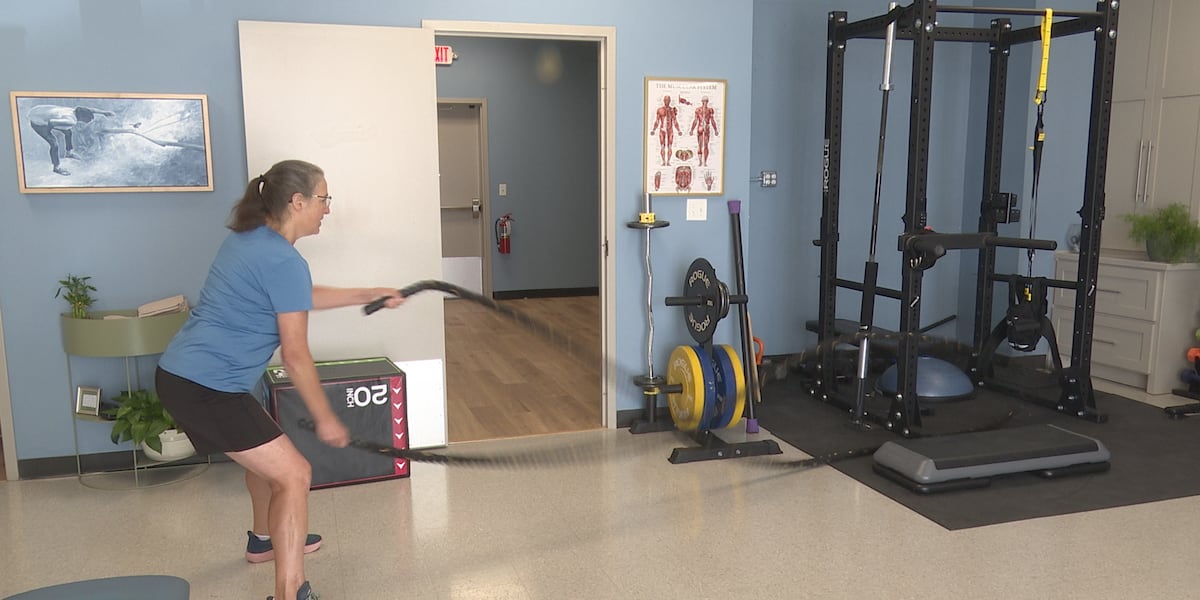Summary
Most peoples idea of exercise as we approach middle age and beyond involves lower impact cardio and lighter weights. But new research is shattering those long held beliefs, focusing on weightlifting and lifting heavier,
Source: KWTX on MSN.com

AI News Q&A (Free Content)
Q1: What are the primary benefits of strength training for middle-aged individuals?
A1: Strength training for middle-aged individuals offers numerous benefits, including increased muscle mass, improved metabolism, enhanced bone density, and better joint function. It also helps in reducing the risk of injuries and can significantly improve overall physical health and performance. Strength training has been shown to be effective in managing weight, improving cardiovascular health, and boosting mental well-being by reducing symptoms of anxiety and depression.
Q2: How does the concept of the 'Reactive Falling Effect' enhance rehabilitation and performance in strength training?
A2: The 'Reactive Falling Effect' is leveraged in a novel training method known as Logic Workout, which uses radical dynamic instability to engage innate balance mechanisms and force real-time motor corrections. This method improves joint control, coordination, and movement precision. Studies have shown that it can lead to complete resolution of chronic pain and significant improvements in functional mobility and strength, challenging the belief that instability training impairs power output.
Q3: What technological advancements are being used to improve posture during strength workouts?
A3: Technological advancements include applications like the 'Fitness Tutor', which uses deep learning and pose estimation to assist users in maintaining correct posture during strength workouts and yoga. This technology provides real-time guidance by analyzing the user's posture and offering corrective feedback, enhancing the effectiveness and safety of workouts without the need for direct supervision.
Q4: What role do gamified feedback systems play in strength training?
A4: Gamified feedback systems in strength training enhance user engagement by providing real-time visual and interactive feedback on their exercise performance. These systems utilize algorithms to detect movement events early, allowing users to see movement-derived metrics and encouraging consistent exercise form. Studies have shown that gamified systems can improve motivation and adherence to workout routines by making exercises more enjoyable.
Q5: What is the impact of combined exercise programs on sleep quality for individuals with type 2 diabetes?
A5: Combined exercise programs, which include both aerobic and resistance exercises, significantly improve sleep quality in individuals with type 2 diabetes. Research has demonstrated improvements in the Pittsburgh Sleep Quality Index scores, with enhancements in total sleep time, sleep efficiency, and wake time after sleep onset. These programs also contribute to better metabolic health by reducing abdominal fat and improving glucose metabolism.
Q6: How does strength training influence the prevention of sarcopenic obesity in older adults?
A6: Strength training plays a crucial role in preventing sarcopenic obesity, a condition characterized by the loss of muscle mass and function accompanied by an increase in body fat. It helps in maintaining and building muscle mass, which is vital for metabolic health and reducing fat accumulation. Machine learning models have been developed to predict and manage sarcopenic obesity, emphasizing the importance of regular strength training in older adults to maintain muscle health and prevent obesity.
Q7: What are the unique benefits of street workouts compared to traditional gym-based strength training?
A7: Street workouts, a form of calisthenics performed in outdoor settings, offer unique benefits such as accessibility, cost-effectiveness, and social interaction. They require no special equipment and can be performed anywhere, promoting a healthy lifestyle and desirable physique. Street workouts foster a sense of community and can be adapted to various fitness levels, making them a versatile alternative to traditional gym-based strength training.
References:
- Strength training - Wikipedia
- Harnessing the 'Reactive Falling Effect' for rehabilitation and performance boosting
- Paul-Emmanuel Sornette, Didier Sornette
- Deep Learning for Fitness
- Mahendran N
- Designing Just-in-Time Detection for Gamified Fitness Frameworks
- Slobodan Milanko, Alexander Launi, Shubham Jain
- The relationship between abdominal fat and sleep quality after combined exercise in patients with type 2 diabetes mellitus.
- Han, Han, Huang, Zou, Gu, Hu, Fang, Meng and Wang.
- Construction of a prediction model for sarcopenic obesity based on machine learning.
- Xu, Liu, Hu, Luan, Duan, Wang, Cui, Zhou and Mao.




